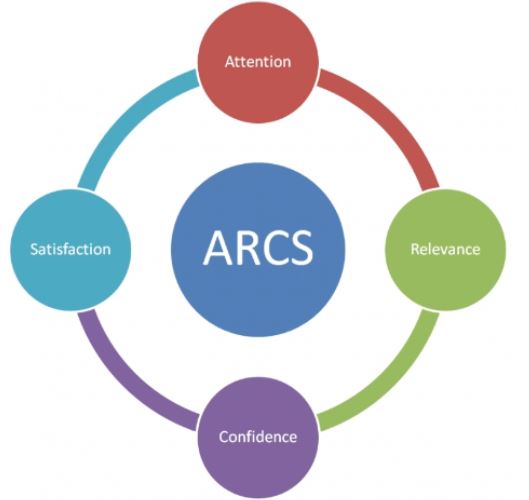 Karageorgakis, 2019
Karageorgakis, 2019
The ARCS model is a framework that instructional designers or teachers can use to enhance learner motivation in the instructional design process. The model was introduced by John Keller, an educational psychologist, in 1983. His goal was to design learning experiences that sustained student motivation when engaged in new content, whether face-to-face or virtual. The ARCS model assumes that motivated learners are likely to achieve their learning goals because they are engaged and persistent. There are four key components in the ARCS model; attention, relevance, confidence, and satisfaction (Keller, 1987, p. 292).
Attention
Attention refers to the learner’s interests. The learner’s interests or attention could be captured by providing specific instances of the content including games, roleplay, or other strategies that support active participation. The uses of different modalities (video, audio, or discussion groups, etc.,) for content presentation may also attract attention.
Relevance
The learning process should show the usefulness of the content so that learners can bridge the gap between content and the real world. The instructor would show how the new content relates to students’ needs and how the students will use it.
Confidence
This component focuses on developing success expectations among learners. The content has to be organized in such a way that learners feel that they have the skill and ability to accomplish the task or understand the content. The instructor should be able to provide feedback to students confirming that their success resulted from their efforts in learning the new content.
Satisfaction
This component focuses on providing intrinsic and extrinsic rewards to learners for their efforts and achievements. Learners should feel satisfied with what they have achieved upon completion of a learning task. For example, an instructor can use positive reinforcement, recognition, and different types of rewards to create a sense of satisfaction among successful learners
Reference
Karageorgakis, T. (2019, June 9). ARCS Motivation Model. What Should Be Included in a
Learning Activity to Make it More Appealing? Educraft
Keller, J. M. (1983). Motivational design of instruction. In C. M. Reigeluth
(Ed.), Instructional-Design Theories and Models: An Overview of Their Current Status (pp. 383-430). Lawrence Erlbaum Associates.
Keller, J. M. & Kopp, T. W. (1987). An Application of the ARCS Model of Motivational Design.
In C. M. Reigeluth (Ed.), Instructional-Design Theories in Action: Lessons Illustrating Selected Theories and Models (pp. 289-320). Lawrence Erlbaum Associates.
